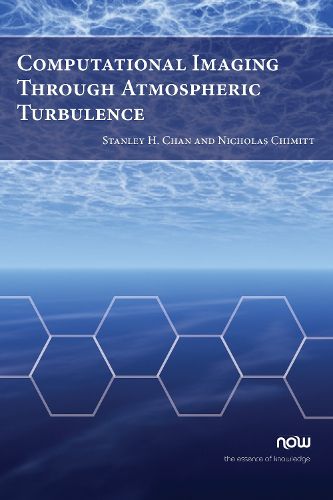Readings Newsletter
Become a Readings Member to make your shopping experience even easier.
Sign in or sign up for free!
You’re not far away from qualifying for FREE standard shipping within Australia
You’ve qualified for FREE standard shipping within Australia
The cart is loading…






This title is printed to order. This book may have been self-published. If so, we cannot guarantee the quality of the content. In the main most books will have gone through the editing process however some may not. We therefore suggest that you be aware of this before ordering this book. If in doubt check either the author or publisher’s details as we are unable to accept any returns unless they are faulty. Please contact us if you have any questions.
Since the seminal work of Andrey Kolmogorov in the early 1940's, imaging through atmospheric turbulence has grown from a pure scientific pursuit to an important subject across a multitude of civilian, space-mission, and national security applications. Fuelled by the recent advancement of deep learning, the field is further experiencing a new wave of momentum. However, for these deep learning methods to perform well, new efforts are needed to build faster and more accurate computational models while at the same time maximizing the performance of image reconstruction.
The goal of this book is to present the basic concepts of turbulence physics while accomplishing the goal of image reconstruction. Starting with an exploration of optical modelling and computational imaging in Chapter 1, the book continues to Chapter 2, discussing the essential optical foundations required for the subsequent chapters. Chapter 3 introduces a statistical model elucidating atmospheric conditions and the propagation of waves through it. The practical implementation of the Zernike-based simulation is discussed in Chapter 4, paving the way for the machine learning solutions to reconstruction in Chapter 5. In this concluding chapter, classical and contemporary trends in turbulence mitigation are discussed, providing readers with a comprehensive understanding of the field's evolution and a sense of its direction.
The book is written primarily for image processing engineers, computer vision scientists, and engineering students who are interested in the field of atmospheric turbulence, statistical optics, and image processing. The book can be used as a graduate text, or advanced topic classes for undergraduates.
$9.00 standard shipping within Australia
FREE standard shipping within Australia for orders over $100.00
Express & International shipping calculated at checkout
This title is printed to order. This book may have been self-published. If so, we cannot guarantee the quality of the content. In the main most books will have gone through the editing process however some may not. We therefore suggest that you be aware of this before ordering this book. If in doubt check either the author or publisher’s details as we are unable to accept any returns unless they are faulty. Please contact us if you have any questions.
Since the seminal work of Andrey Kolmogorov in the early 1940's, imaging through atmospheric turbulence has grown from a pure scientific pursuit to an important subject across a multitude of civilian, space-mission, and national security applications. Fuelled by the recent advancement of deep learning, the field is further experiencing a new wave of momentum. However, for these deep learning methods to perform well, new efforts are needed to build faster and more accurate computational models while at the same time maximizing the performance of image reconstruction.
The goal of this book is to present the basic concepts of turbulence physics while accomplishing the goal of image reconstruction. Starting with an exploration of optical modelling and computational imaging in Chapter 1, the book continues to Chapter 2, discussing the essential optical foundations required for the subsequent chapters. Chapter 3 introduces a statistical model elucidating atmospheric conditions and the propagation of waves through it. The practical implementation of the Zernike-based simulation is discussed in Chapter 4, paving the way for the machine learning solutions to reconstruction in Chapter 5. In this concluding chapter, classical and contemporary trends in turbulence mitigation are discussed, providing readers with a comprehensive understanding of the field's evolution and a sense of its direction.
The book is written primarily for image processing engineers, computer vision scientists, and engineering students who are interested in the field of atmospheric turbulence, statistical optics, and image processing. The book can be used as a graduate text, or advanced topic classes for undergraduates.